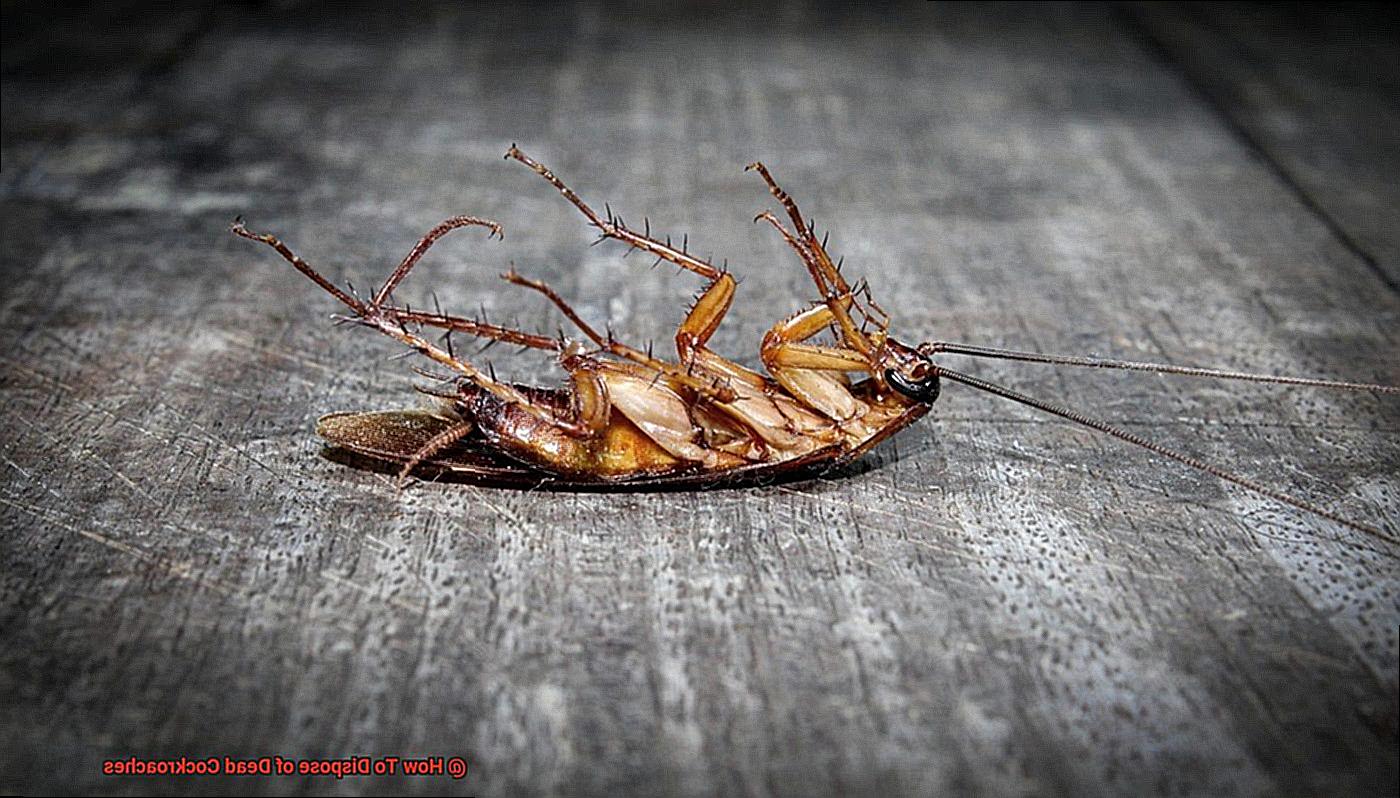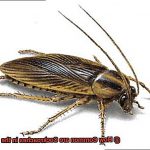Cockroaches are infamous for their resilience – they can survive without food, water, and even their heads. Unfortunately, we all have to deal with cockroach infestations from time to time. Whether it’s a full-blown infestation or just the occasional sighting, disposing of dead cockroaches is crucial. Not only does it keep your home or office hygienic, but it also prevents a resurgence of these pesky creatures.
But how exactly do you dispose of dead cockroaches effectively? Is sweeping them up and tossing them in the trash enough? Can you use a vacuum cleaner? Are there any products that make the process easier? In this article, we’ll answer all these questions and provide you with a comprehensive guide on how to dispose of dead cockroaches properly. From the equipment required to the steps needed to ensure your home remains cockroach-free, we’ve got you covered. So if you’re ready to tackle this task head-on, keep reading.
Getting rid of dead cockroaches isn’t just about aesthetics; it’s about ensuring that these pests don’t come back. And let’s face it – no one wants to deal with a repeat infestation. That’s why knowing how to dispose of dead cockroaches correctly is essential. With our expert tips and tricks, you’ll be able to get rid of those pesky critters safely and efficiently. So let’s dive in and learn how to dispose of dead cockroaches like a pro.
a. What Are Cockroaches?
Contents
- 1 a. What Are Cockroaches?
- 2 b. Why Is It Important to Dispose of Dead Cockroaches Properly?
- 3 How to Handle Dead Cockroaches
- 4 Scooping Up Dead Cockroaches with Tissue or Paper Towel
- 5 Vacuuming Up Dead Cockroaches
- 6 Shoveling and Dustpanning Up Dead Cockroaches
- 7 Flushing and Burning Dead Cockroaches – Not Recommended
- 8 Conclusion
Cockroaches may be a common sight in many households worldwide, but their presence can also be a cause for concern. These nocturnal insects are known for their remarkable ability to adapt to harsh environments and can survive in a variety of living conditions. With their hard, flat, oval-shaped bodies that range in color from brown to black, long antennae, six legs, and wings, they are easily recognizable.
Cockroaches are not just a nuisance; they are also a health hazard. They feed on a variety of things such as food scraps, grease, paper products, and even other dead cockroaches. However, they also carry harmful bacteria and pathogens on their bodies that can contaminate food and surfaces, leading to illnesses like salmonella and E.coli. Furthermore, they can trigger allergies and asthma attacks in some people.
There are different species of cockroaches out there, but the most commonly found in homes include the German cockroach, American cockroach, and Oriental cockroach. Each species possesses unique characteristics and habits that distinguish them from one another.
Knowing what cockroaches are is an essential first step in learning how to handle them properly when they die. When disposing of dead cockroaches, it’s crucial to handle them with care as they can carry disease and bacteria. Proper disposal is necessary to avoid attracting other pests or creating an unpleasant odor.
One way to dispose of dead cockroaches is by using a tissue or paper towel to scoop them up and then placing them in a plastic bag.
Seal the bag tightly and dispose of it in an outdoor trash bin as soon as possible. Alternatively, you can use a vacuum cleaner with a hose attachment to pick up the dead cockroach. Avoid using the main vacuum brush as it can spread dirt and bacteria around your home.
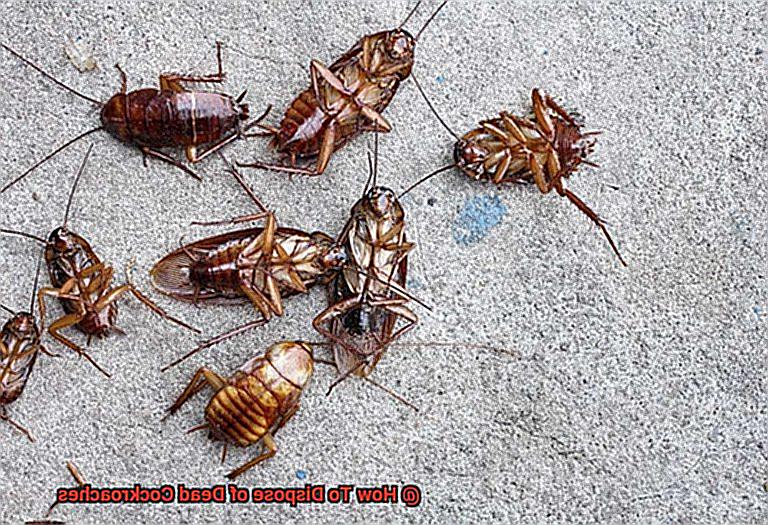
b. Why Is It Important to Dispose of Dead Cockroaches Properly?
Cockroaches are not just pesky insects that invade our homes, they can also carry harmful bacteria and diseases that put our health at risk. The importance of disposing of dead cockroaches properly cannot be overstated. Failure to do so can lead to a host of problems, including attracting other pests that can exacerbate the infestation.
When a cockroach dies, it releases pheromones that signal to other cockroaches that there is a food source nearby. This can lead to a more severe infestation if the dead cockroach is not disposed of properly. Moreover, dead cockroaches can attract other pests, such as ants or flies, which can worsen the infestation and pose additional health hazards.
Improper disposal of dead cockroaches can also have environmental consequences. Cockroach carcasses that are not disposed of in sealed bags or containers can release harmful gases into the atmosphere, contributing to air pollution and harming the environment.
To avoid these risks, it is critical to dispose of dead cockroaches properly. Use tissue or a vacuum cleaner to pick up the carcass and dispose of it in an outdoor trash bin as soon as possible. This will prevent other pests from being attracted and reduce the likelihood of further infestations.
How to Handle Dead Cockroaches
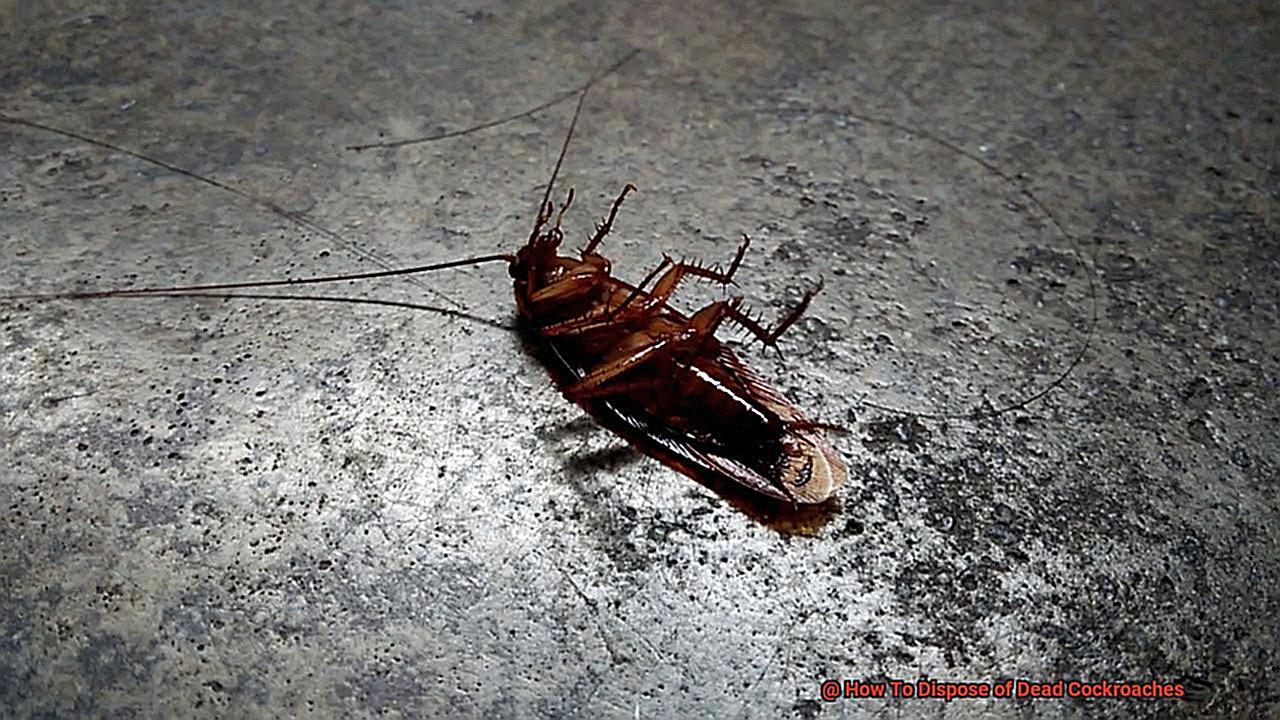
Protect Yourself from Harmful Germs
When it comes to dealing with dead cockroaches, the first step is to protect yourself from any potential health hazards. These pests carry harmful germs and bacteria that can be dangerous to humans.
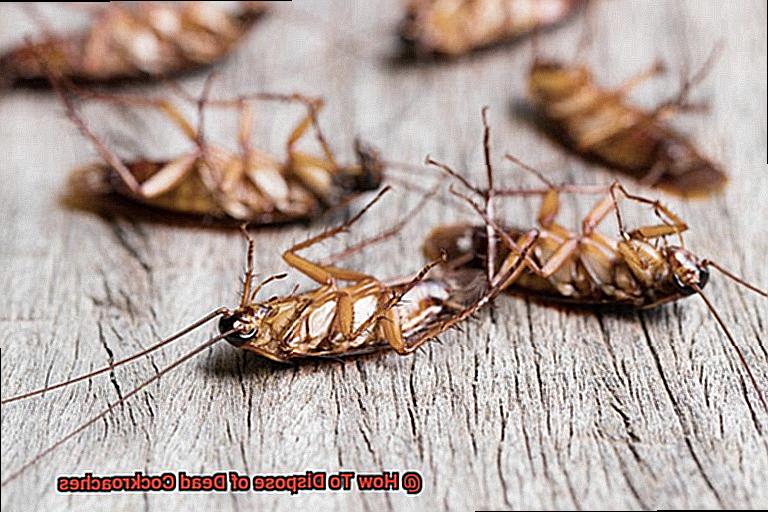
So, before handling a dead cockroach, put on gloves and a mask to avoid any direct contact with the insect. Think of it like suiting up in your own personal protective gear.
Proper Disposal Techniques for Dead Cockroaches
Proper disposal of dead cockroaches is essential for maintaining a clean and healthy living environment. After picking up the dead cockroach with a tissue or paper towel, place it in a sealed plastic bag or container.
This will prevent any odors or bacteria from spreading and attracting other pests. Make sure to tie the bag tightly shut before disposing of it in your regular trash bin. If you have a larger infestation, consider using a vacuum cleaner with a disposable bag attachment to dispose of the dead insects.
Subtopic 3: The Freezing Method as a Temporary Solution
If you are unable to dispose of the dead cockroach immediately, storing it in a sealed container or bag in the freezer can help prevent any odor or bacteria from spreading. This may not be the most pleasant solution, but it’s better than leaving the dead insect out in the open. Just make sure to properly dispose of the frozen cockroach as soon as possible.
Thoroughly Clean the Area
After disposing of the dead cockroach, it’s important to clean the area thoroughly with disinfectant. Use a disinfectant spray or wipe to clean any surfaces that may have come into contact with the insect.
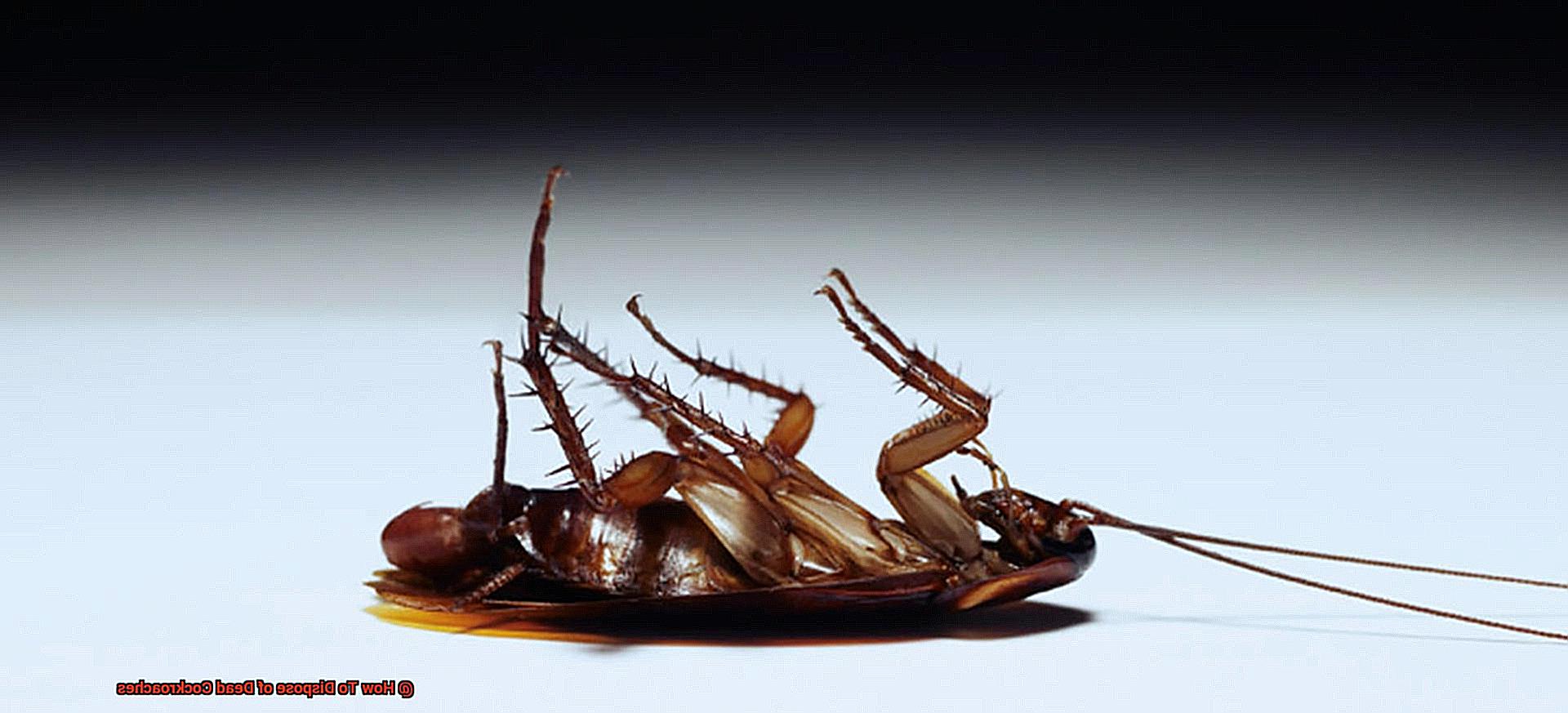
This will help to prevent any spread of bacteria and reduce the risk of future infestations. Think of it like wiping away any traces of the enemy’s germs from your territory.
Avoid Flushing or Burning Dead Cockroaches
Flushing dead cockroaches down the toilet is not recommended as they can potentially clog your pipes. Burning dead cockroaches is also not safe as they can release harmful fumes. Stick to proper disposal techniques to avoid any additional problems. Remember, defeating the enemy doesn’t mean causing harm to yourself or your home.
In conclusion, handling dead cockroaches may not be the most pleasant task, but it’s crucial for maintaining a clean and healthy living environment.
Protecting yourself with gloves and a mask, properly disposing of the dead cockroach, cleaning the area thoroughly, and avoiding flushing or burning are all necessary steps to take.
By following these steps, you can keep your home safe from potential health hazards and future infestations.
Scooping Up Dead Cockroaches with Tissue or Paper Towel
Dealing with the aftermath of a cockroach infestation can be a daunting task, but scooping up dead cockroaches with tissue or paper towel is a simple and effective method that can be done quickly. However, it’s important to take precautions to ensure proper disposal and protect yourself from any potential health hazards.
The first step in this process is to protect yourself by wearing gloves or using tissue/paper towel as a barrier between your hand and the dead insect. This is incredibly important because cockroaches can carry bacteria and other harmful microorganisms that can cause diseases. By handling them without proper protection, you run the risk of exposing yourself to these pathogens.
When it comes to scooping up a dead cockroach, it’s crucial to be gentle so that it does not break apart or release any fluids. Using a tissue or paper towel helps to absorb any fluids and prevents them from spreading on surfaces. Not only does this make the process easier, but it also reduces the risk of contamination and keeps your home clean.
After you’ve successfully scooped up the dead cockroach, it’s important to dispose of it properly. This means placing it in a plastic bag or container that can be sealed tightly. This not only prevents any odors from escaping but also ensures that the dead cockroach cannot be accessed by other pests like ants or flies.
Lastly, the plastic bag or container should be disposed of outside in the trash bin. Leaving it inside your home could attract other pests and create an unpleasant odor. It’s also not recommended to flush dead cockroaches down the toilet as this can clog the pipes and create unnecessary plumbing issues.
Vacuuming Up Dead Cockroaches
Cockroach infestations are a common household problem that can cause discomfort and pose health risks. When it comes to disposing of dead cockroaches, vacuuming them up seems like an easy solution. However, to ensure that the process is safe and effective, you need to take proper precautions.
Choosing the right vacuum cleaner is crucial. A HEPA filter in your vacuum cleaner can trap microscopic particles and prevent them from circulating back into the air. This makes it an ideal choice for those who suffer from allergies or respiratory problems.
When vacuuming up dead cockroaches, wear gloves and a face mask to protect yourself from coming into contact with the pests or their droppings. It’s also essential to dispose of the vacuum bag or container correctly. If you use a bagged vacuum cleaner, tie the bag tightly before disposing of it in an outdoor trash bin. For bagless vacuum cleaners, empty the container directly into a trash bag, seal it securely, and throw it away.
After disposing of dead cockroaches, don’t forget to clean your vacuum cleaner thoroughly. Wipe down the exterior with disinfectant wipes and follow the manufacturer’s instructions to clean the filter. This will help prevent any lingering odors or bacteria from developing inside the machine.
Shoveling and Dustpanning Up Dead Cockroaches
Dealing with dead cockroaches can be an intimidating task, but fear not, for shoveling and dustpanning is a tried and tested method for disposing of these pests. Not only is this method effective, but it also saves you from having to touch the creepy crawlies directly.
To start, arm yourself with a clean and sturdy shovel and dustpan with a flat edge. Carefully approach the deceased cockroach and gently scoop it up with the shovel. Use a sweeping motion to ensure that every part of the insect is collected.
Once you have gathered all of the dead cockroaches in the area, dispose of them in an outdoor trash bin or bag. Leaving them inside your home or apartment could attract other pests, so ensure proper disposal to avoid any future infestations.
After disposing of the cockroaches, it is crucial to thoroughly wash the shovel and dustpan with hot soapy water to prevent any spread of bacteria or germs. Always remember to wear gloves and take proper safety precautions when dealing with pest control.
While shoveling and dustpanning up dead cockroaches may not be the most pleasant task, it is an effective way to get rid of them without having to handle them directly.
Flushing and Burning Dead Cockroaches – Not Recommended
Dead cockroaches can be a real pain to deal with, but don’t let convenience sway you into flushing or burning them. These methods may seem like a quick fix, but they can actually cause more harm than good.
Flushing dead cockroaches down the toilet can lead to blocked pipes, which is not only messy but also expensive to fix. Additionally, flushing dead cockroaches can attract other pests like rats and mice into your home, which is definitely not something you want.
Burning dead cockroaches may seem like an easy solution, but it’s actually not recommended. When burned, the waxy outer layer of cockroaches produces a foul odor that can cause respiratory problems for both humans and pets. Moreover, burning dead cockroaches can be a fire hazard if not done carefully.
So what should you do instead? Luckily there are safer and more efficient ways to dispose of dead cockroaches. One option is using a vacuum cleaner with a disposable bag or filter to suck up the dead cockroaches. This way, you can easily collect them without any risk of plumbing issues or harmful chemicals being released into the air.
If you prefer a more hands-on approach, you can use gloves and a plastic bag to remove the dead cockroaches manually. Simply place them in the bag, tie it up tightly, and dispose of it in an outdoor garbage bin.
In conclusion, while it may be tempting to flush or burn dead cockroaches, it’s not worth the risk. These methods can cause more problems than they solve. Instead, use a vacuum cleaner or gloves and a plastic bag to dispose of them safely and efficiently.
ehxLwpyd_ZM” >
Conclusion
In conclusion, proper disposal of dead cockroaches is crucial in maintaining a clean and healthy living environment. These pesky insects are more than just a nuisance, as they can carry harmful bacteria and diseases that pose a serious threat to our health. Neglecting to dispose of them properly can lead to attracting other pests, exacerbating the infestation, and exposing ourselves to potential health hazards.
Fortunately, there are various ways to dispose of dead cockroaches safely and effectively. Whether you prefer using tissue or paper towel to scoop them up, vacuuming them up with your trusty machine, or shoveling them into a dustpan, it’s essential to wear gloves and a mask for added protection.
To ensure proper disposal techniques, seal the dead cockroach in a plastic bag or container before disposing of it in an outdoor trash bin. Avoid flushing or burning them as these methods can cause more harm than good.
After disposing of the dead roaches, make sure to thoroughly clean the area and equipment used. This will help prevent any spread of bacteria and reduce the risk of future infestations.

